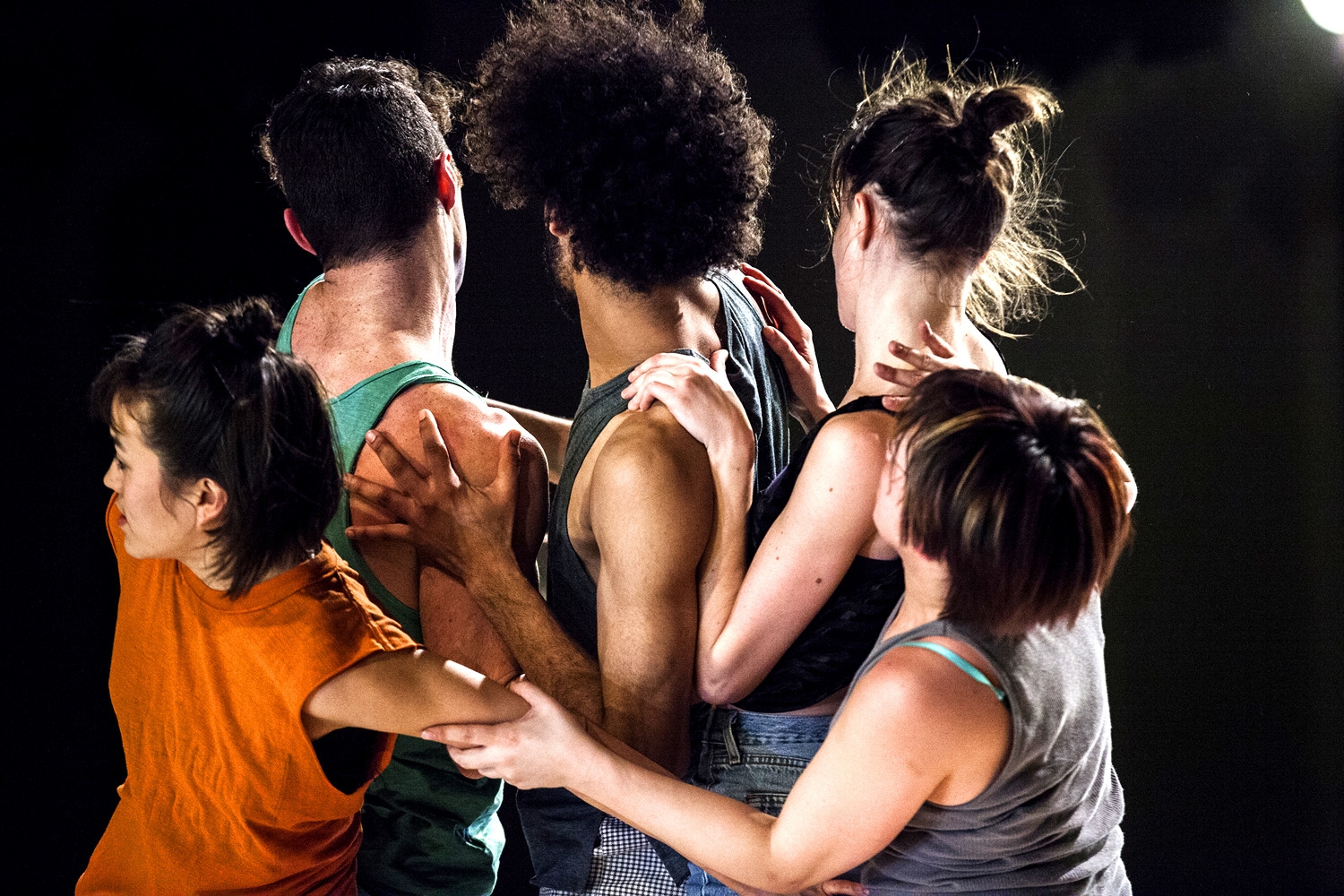“The whole series is dealing with the question of how contemporary performance can be a place of a ritual space where we feel our culpability and our co-creativity,” Driscoll explains. “The first one does that very much through the senses and very physically. The second one – which actually just premiered last week – is doing it more through stories and narrative. We kind of pull the audiences stories into the work. The third one is a little bit in the ether for me at the moment, but the idea was that it’s going to be an actual physical installation that the audience is going to be a part of.”
Coming to Melbourne Festival as part of a worldwide tour, Driscoll’s performance involves five performers impressively contorting and morphing, pushing their bodies to the limit in an artistic display of wonder. The integration of various elements in the realms of theatre and art installation create a “hybrid” show – familiar and relatable, while firmly remaining in its own unique form.
“The preparation is definitely in the doing,” Driscoll says. “We’ve been touring the show for about two years now, and the more we tour it, the deeper we are into the practices. We do a vocal warm-up, and all the dancers have a lot of physical practices they do to stay in shape, but the show is unique in that it doesn’t rise from one particular kind of training. It’s really from doing it that we’ve become able to do it, if that makes sense.”
For Driscoll, the beauty of dance as an expressive form is in both the transformative properties of its physical limitation and the limitless potential for direct communication in every individual body, be it in a club or the comfort of our own kitchen. From the moment she danced as a child, she realised its potential for a grounded awareness.
“I do believe in a root connection, and I do believe that there is a kind of human ownership over all of these artforms,” Driscoll explains. “I very reverently studied dance and discipline. That’s something I came to know very deeply. But I do think that artforms are far too traditionally separated, frequently, in the way that they’re discussed and critiqued.”
Embodying the theme of universal human connection, Driscoll explains that in the early stages of building such tightly woven, multi-faceted concepts, communication is vital. Her fellow performers and herself have built their own society – they have their own strange language for movements and parts of the show, based on locations they we were in when something was conceived – and there’s a sense of collective camaraderie as they initially improvise in new projects to forge clear interpretations of Driscoll’s visuals. Her own perceptions evolve during the process of creation, and she still surprises herself on her endeavours.
“I’ve had the much more physical perception of my connection with other people, and then on the other side of that, I’ve also noticed my really perpetual habit of forgetting that,” Driscoll laughs. “I become even more aware of the stories that I tell myself on a daily basis – that I’m alone, that no one really gets me, that I’m alienated – and I’m really aware that I live in a culture that perpetuates that. It’s interesting, the combination of feeling my connection more, but actually also being really aware of how forgetful I am of it, sometimes.”
BY JACOB COLLIVER

